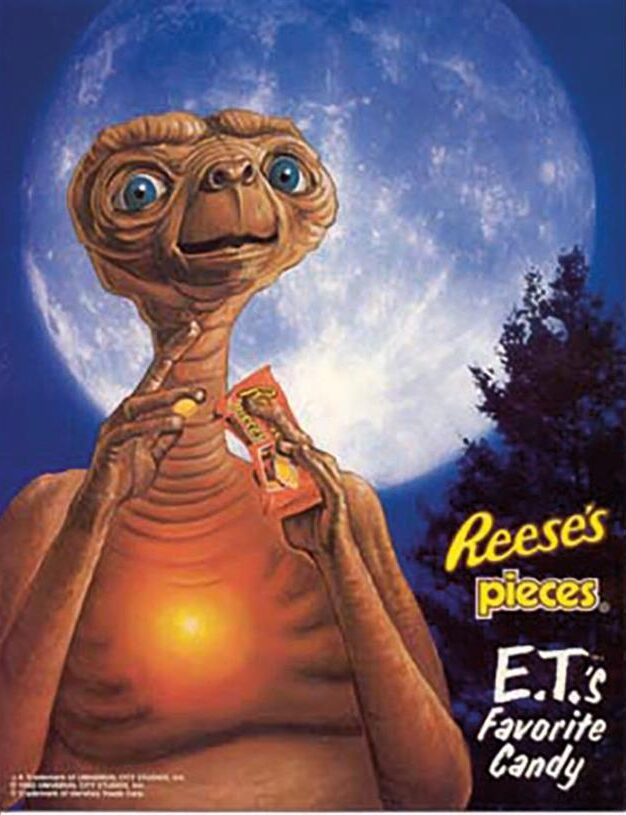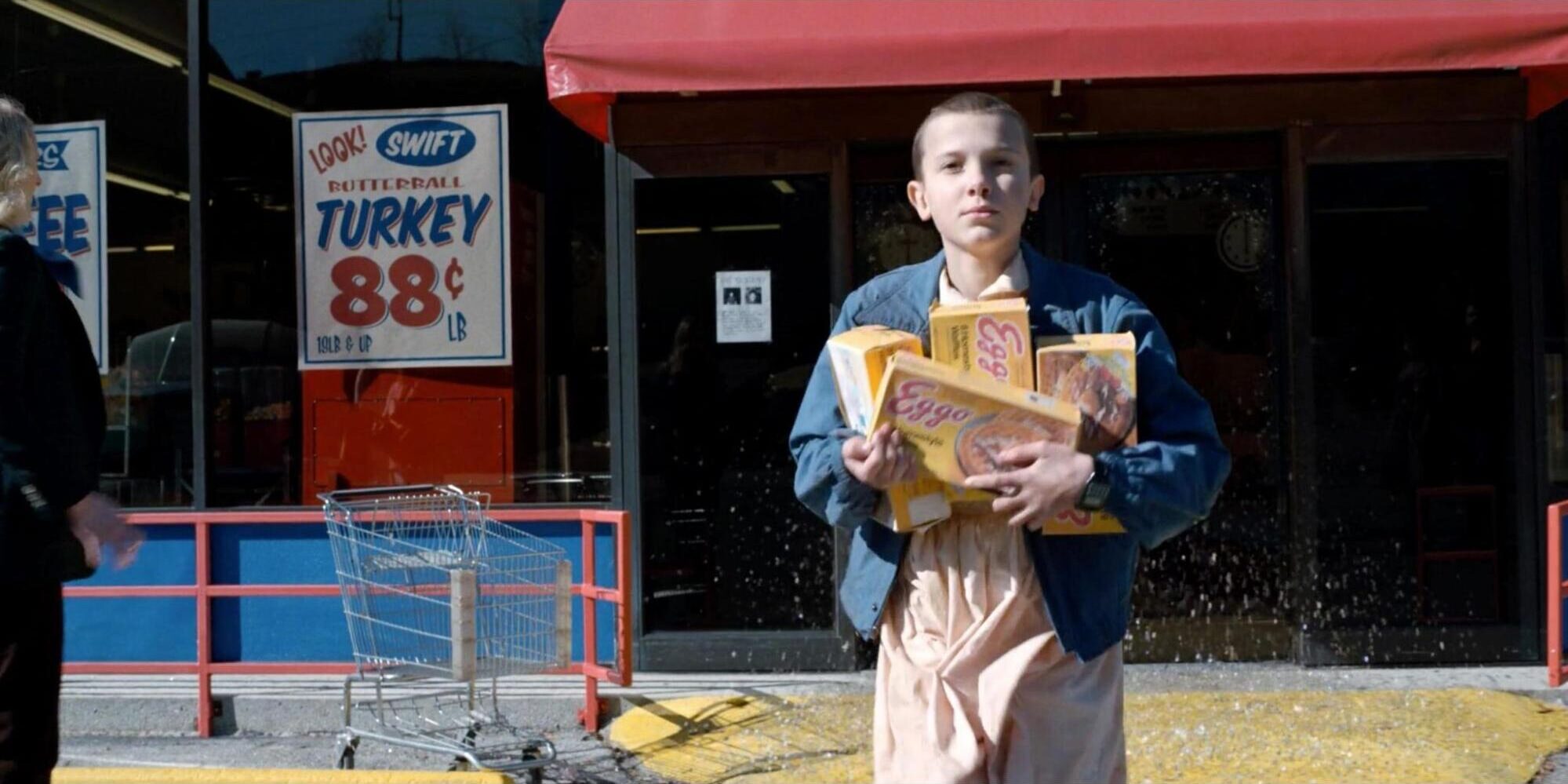Nowadays, people watch movies, read books, play games, and consume other forms of content in exceedingly high amounts. Many people grow up on these movies, books, and games and feel nostalgic toward them. What if there was a way to inject an ad into these types of content, so that the user feels nostalgic toward the brand and its products too?
Well, there is, and it’s called product placement. Capitalizing on the wide audience of the content consumers, the product placement pursues its advertising goals efficiently and relentlessly. How can it be otherwise if the ad intertwines with the movie, or any other type of content?
So what’s the product placement?
Product placement is a powerful advertising technique, because it is an integral part of a movie, or any other content, barely visible, and highly impactful, especially when used on grown-ups. The movie producer is paid for integrating an ad into the plot, so that the ad appears as a genuine part of the script. There is no way to defend oneself against it other than turning off the TV. Product placement includes, but is not limited to, the following forms of content:
- Movies & TV shows
- Music videos
- Video games
- Social media & influence marketing
- Books & literature
Origins and history
Product placement, integrating branded products or services into media content, has a long history:
- 1986: Sunlight soap, the first ever product placement in a movie
- 1920s–1930s: Early practice of subtle product placements in films.
- 1940s–1950s: Rise in popularity during the Golden Age of Hollywood.
- 1950s–1960s: Expansion to television with sponsorships and branded items.
- 1960s–1970s: Introduction of regulations for transparency and disclosure.
- 1980s–1990s: Strategic placements aligning with characters and demographics.
- 2000s–Present: Integration in digital media, including collaborations with influencers.
Product placement to some degree is inevitable, because the promoted goods are a part of the culture too. It is difficult to make a mass culture product without… referring to culture. Unless we’re talking about sci-fi, a racing movie cannot be shot without cars, a shooter game cannot be made without armament, even a book can have a product placement, like in case of Ian Flemming’s James Bond and Aston Martin DB3
Product placement examples
Product placement is effective, which is proven by the fact that more and more types of content are explored by the advertisers to integrate in an ad or two. Product placement might be intentional, when the advertisers actually pay to include a couple of references to their products or unintentional, when the content creator is trying to add a flavor, by specifying the watch trademark, car manufacturer, or cigarette maker.
Movies
- James Bond movies: known for featuring iconic brands like Aston Martin cars, Omega watches, and Bollinger champagne, the Bond franchise has effectively utilized product placement to enhance its luxurious and sophisticated image.

- E.T. the Extra-Terrestrial: the movie prominently featured Reese’s Pieces, which saw a significant boost in sales after the movie’s release, demonstrating the power of strategic placement in creating brand awareness and driving consumer interest.

- Cast Away: the Wilson volleyball, a key character in the movie, became synonymous with the movie itself and generated substantial brand recognition for the sporting goods company.

- Need for Speed (2014): videogames inspired movie is bound to have licensed cars, like Koenigsegg Agera, Lamborghini Sesto Elemento, and, of course, Ford Mustang Shelby and 2015. But not only cars are featured there, for example, a couple of electronic gadgets, like Toshiba and Samsung, are also there. Don’t forget about the garments, like Nike shoes etc.

TV shows
- Stranger Things: this popular Netflix series seamlessly integrated brands from the 1980s era, such as Coca-Cola, Eggo waffles, and Dungeons & Dragons, contributing to the show’s nostalgic appeal and immersing viewers in the time period.

- Mad Men: Set in the advertising industry of the 1960s, the show featured numerous real-life brands, including Lucky Strike cigarettes and Jaguar cars, effectively capturing the essence of the era and showcasing the influence of advertising.

Music videos
- Lady Gaga’s Polaroid partnership: Lady Gaga’s collaboration with Polaroid resulted in the release of a branded camera and a music video featuring their products. This strategic integration allowed Polaroid to reach a younger demographic and leverage Lady Gaga’s immense popularity.

Video games
- FIFA series: Known for its realistic portrayal of the world of soccer, the FIFA games often feature prominent sponsorships and product placements from major brands within the sports industry, including Adidas, Coca-Cola, and EA Sports’ own partnerships.

- Grand Theft Auto series: These open-world games skillfully incorporate parodies of real-life brands and advertisements, creating a satirical reflection of consumer culture and adding a layer of authenticity to the game’s immersive environments.

Social media and influencers
- Instagram and YouTube collaborations: Brands often collaborate with popular influencers on these platforms to feature their products in sponsored posts or videos. For instance, fashion and beauty brands frequently partner with influencers to showcase their products, reaching a vast audience and leveraging the influencer’s credibility and following.

These examples demonstrate the versatility and effectiveness of product placement in capturing audience attention, enhancing brand recognition, and driving consumer engagement across different forms of media, whether it’s a movie, game, or anything else.
Bad examples of product placement
Sometimes product placement can backfire, especially when the integration feels forced, intrusive, or disrupts the storytelling experience, leading to negative feedback from audiences and critics. Here are a few notable cases:
- “Transformers” movie series: the “Transformers” movies, directed by Michael Bay, have faced criticism for excessive and overt product placement. The movies featured prominent placements from various brands, including General Motors, Nokia, and Budweiser, which were often perceived as heavy-handed and distracting. Many viewers felt that the placements took away from the storytelling and were more focused on advertising than on enhancing the film’s narrative.

- “Man of Steel”: the Superman movie “Man of Steel” faced backlash for its extensive product placements. Critics and audiences pointed out that the placements of IHOP (International House of Pancakes) and Sears were jarring and disrupted the immersion in the movie’s universe. The inclusion of these brands felt out of place and forced, drawing attention away from the story and generating negative feedback.

- “I, Robot”: this science fiction movie starring Will Smith included numerous placements from companies like Audi, Converse, and JVC. While some integrations were seamless, others felt forced and out of context, which led to criticism. For example, a scene in which Will Smith’s character meticulously displays his Converse shoes in a close-up was seen as excessive and unnatural, drawing attention to the brand rather than serving the story.
- “Mac and Me”: this 1988 family movie has become infamous for its blatant and awkward product placements, particularly for McDonald’s and Coca-Cola. The movie featured a highly contrived scene set in a McDonald’s restaurant, where the characters engage in a dance sequence. The placement was widely mocked for its transparent advertising and detracted from the overall quality of the movie.

- Music Videos: some music videos have faced criticism for incorporating excessive product placements. For example, the aforementioned Lady Gaga’s music video for “Telephone” was seen as a vehicle for advertising numerous brands, including Virgin Mobile, Miracle Whip, and Polaroid. The placements were seen as intrusive and detracted from the artistic vision of the video.
Controversies surrounding product placements often arise when they are perceived as prioritizing commercial interests over artistic integrity. When brands are overly prominent or disrupt the narrative flow, audiences can feel disconnected and see the placements as manipulative attempts to sell products. Striking a balance between brand integration and storytelling is crucial to avoid negative reactions and maintain a positive viewing experience.
Conclusion
Product placement is a powerful advertising technique that seamlessly integrates branded products into various forms of media content. Successful examples include James Bond movies, E.T. the Extra-Terrestrial, Stranger Things, and collaborations with influencers on platforms like Instagram and YouTube. However, product placement can backfire when it feels forced or disruptive, as seen in the Transformers movies and Man of Steel. Striking a balance between brand integration and storytelling is crucial to avoid negative reactions. Overall, product placement is an effective strategy when done well, enhancing brand recognition and audience engagement.
If you want to reach new GEOs and audiences, maybe it is all waiting for you on Telegram? We’ve prepared some material about Telegram audiences. What are the messenger’s users like this year? How old they are, what they do, and what they are interested in!





